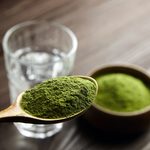Foods to Grow On
What is your family eating? Are they eating healthy? Learn how creating a proper diet for your children early on will benefit them for the rest of their lives.
Eating properly has never been more important with the growing epidemic of childhood obesity. Parents have an important role to play and it starts at the table with the good nutrition.
Foods for Toddlers
After the first year children can eat most dishes prepared for the rest of the family. Toddlers, however, have high energy requirements and small stomachs. Canada’s Food Guide recommends dividing up servings from one food group over five or six small meals or snacks a day. Intervals of about an hour and a half will ensure snacks don’t interfere with meals.
Don’t worry about toddler food jags—for example not wanting their meat to touch the vegetables on their plate—most are short-lived. Offer a reasonable alternative that respects your child’s preferences without giving in to every whim.
Balance and Variety
Variety is the key for healthy childhood eating. Carbohydrates—bread cereals, fruits and vegetables—should make up the major part of the diet. Protein foods can include meat, fish, milk, soy products and combinations of grains and legumes.
Calcium’s Role
Milk is an important source of calories, minerals and vitamins. Children four to nine years of age should have two to three milk-product servings daily.
The Value of Dietary Fats
Fats are probably the most misunderstood nutrients; we all need a certain amount of fat. Several vitamins (A, D, E and K) can be absorbed only in the presence of fat, and fats are necessary for the production of other body chemicals, including hormones. The Canadian Heart and Stroke Foundation recommends using unsaturated oils such as canola, olive and soybean as well as non-hydrogenated margarines (no more than 30 to 45 mL per day). Grilled and baked foods are preferable to fried and fatty ones for children of all ages.
Eating Their Vegetables
Go for bright colours and interesting textures to stop the battle over vegetables. Crisp and crunchy veggies served with a low fat dip are always popular. Substitute minced vegetables (zucchini, eggplant, mushrooms) for ground meat in spaghetti sauce.
Iron Deficiency
Unfortunately, many children don’t get enough iron-rich foods. Heme, which is the iron easily absorbed by humans, is found in meat, eggs, fish, poultry and seafood. Breakfast cereals, legumes, grains, breads, seeds, nuts, dried fruits and dark green, leafy vegetables contain non-heme iron, which is harder to absorb. Adding vitamin C-rich foods helps improve the absorption of non-heme iron.
Foods for Teenagers
With their massive growth spurts, adolescents need more of everything: calories and protein for growth and to build muscles; and protein, calcium, phosphorus and vitamin D for bone formation. However, their nutrition often nose-dives when they start making their own food choices—which may not always be the best.
Building Bone
Youths 10 to 16 years of age need three to four milk-product servings a day—the equivalent of two cups of milk and 30–60 g of cheese or three to four cups of yogourt. Good milk substitutes are smoothies, fortified soy beverages and even chocolate milk.
Snacking and Fast Food
Teenagers prefer snacks loaded with fat, sugar and salt: potato chips, French fries, hamburgers, hot dogs, pizza and chocolate bars. A steady diet of fast food is low in vitamins A and C, calcium and dietary fibre. Encourage teenagers to choose grilled chicken, sandwiches with lean meats or a slice of vegetarian pizza.
Pack Your Kids’ Lunches
Most school cafeterias are improving their menus but there are still too many bad choices. Start a family tradition of packing their own lunches that include healthy foods that reduce the temptation of junk food.



